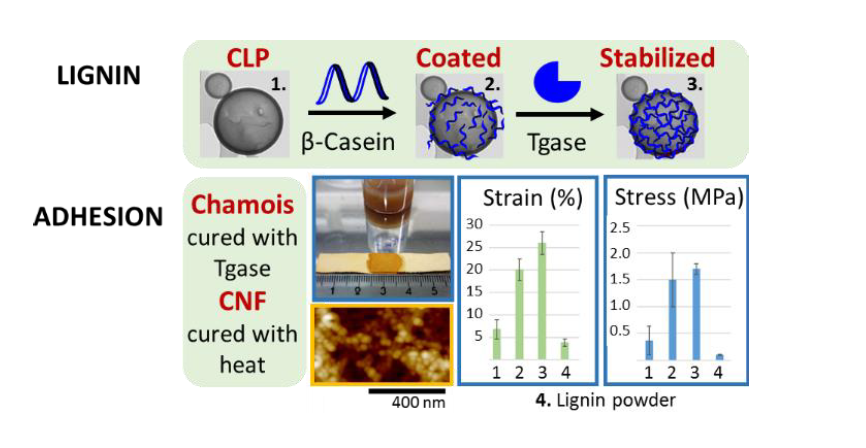Lignin has interesting functionalities to be exploited in adhesives for medicine, foods and textiles. Nanoparticles (NPs) <100 nm coated with poly(L-lysine), PL and poly(L-glutamic acid) PGA were prepared from the laccase treated lignin to coat nanocellulose fibrils (CNF) with heat. NPs ca. 300 nm were prepared, β-casein coated and cross-linked with transglutaminase (Tgase) to agglutinate chamois specimens. Size exclusion chromatography (SEC) and Fourier-transform infrared (FTIR) spectroscopy were used to characterize polymerized lignin, zetapotential and dynamic light scattering (DLS) to ensure coating of colloidal lignin particles (CLPs). Protein adsorption on lignin was studied by quartz crystal microbalance (QCM). Atomic force microscopy (AFM) was exploited to examine interactions between different polymers and to image NPs with transmission electron microscopy (TEM). Tensile testing showed, when using CLPs for the adhesion, the stress improved ca. 10 and strain ca. 6 times compared to polymeric lignin. For the β-casein NPs the values were 20 and 8, respectively, and for the β-casein coated CLPs between these two cases. When NPs were dispersed in adhesive formulation, the Young's moduli confirmed significant improvement in the elasticity of the joints over the adhesive alone. Exploitation lignin in nanoparticulate morphology is a potential method to prepare bionanomaterials for advanced applications.

